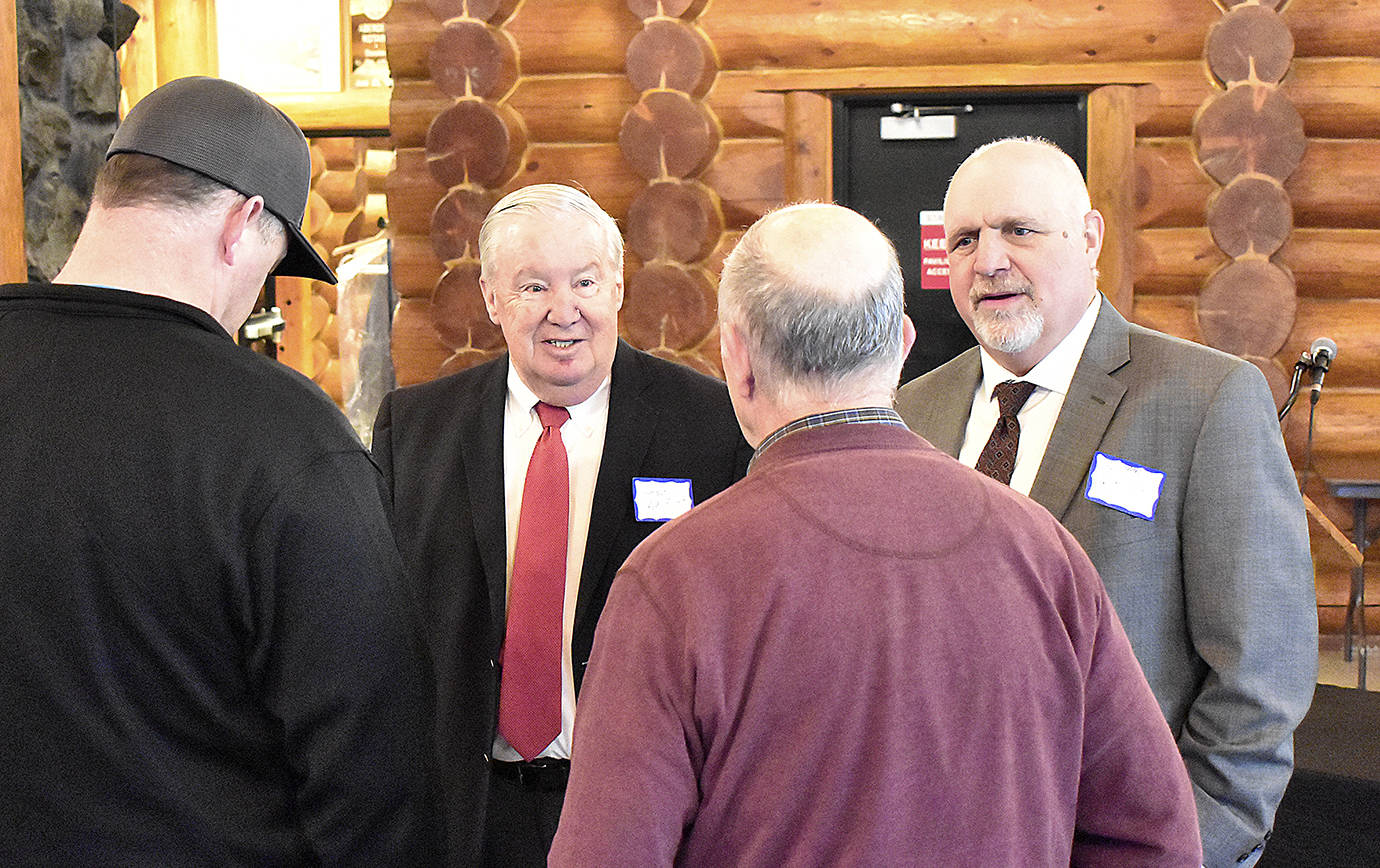Port of Grays Harbor Executive Director Gary Nelson reflected on his 20 years at the Port during his annual business report in Aberdeen on Wednesday.
“I would have been surprised if you had told me 20 years ago that in the year 2020 the Port would have an annual cargo tonnage shipping through Grays Harbor at 10 times the volume it was in 2000,” he said. “And probably most surprising would be the leading producer of cannabis – legally – operating on Port property, employing dozens of happy Harborites.”
Other surprises included “one (railroad) track loop, let alone two,” and an International Longshore and Warehouse Union Local 24 workforce that has grown from 40 registered members often needing to travel for work to nearly 100 registered and casual members with enough hours being generated to support more than 120 full-time employees.
In 2019, the Port had 101 deep-water ships and barges call to its docks, and 32,627 rail cars moved goods through the Port. There were 156,860 longshore hours worked, and about 2,950,000 metric tons of cargo handled, a little more than in 2018 and a record for the Port.
Nelson added Port ownership of the Satsop Business Park to his list of surprises. There, 300 workers reported to businesses daily, and 302 people participated in trainings conducted at the park in 2019. It’s also home to the Grays Harbor College Forestry Program.
“The Grays Harbor Forestry Program to manage our sustainable forests achieved a milestone this year with the first timber harvest and sale managed by four student interns,” said Nelson. “The program uses the forests as the classroom. To date 35 students have completed this program.”
Other milestones pointed out by Nelson included the current dredging of the Westport Marina, which will be completed in 2020. This is the first time in more than 40 years the marina was dredged, “which was evident from the amount of old equipment and debris on the basin floor.” Another was AGP opening its largest processing facility in Aberdeen, South Dakota last summer, generating additional volumes of soybean meal through its Terminal 2 location.
“In fact Pasha Stevedoring and Terminals partnered with AGP and ILWU Local 24 to ship more than 2.3 million metric tons of ag products through Terminal 2, a new record for the facility,” said Nelson.
The Port has benefited from its current business model to encouraging private investment on port-owned uplands. “Early on we recognized the companies that had a physical investment in facilities and infrastructure were more committed to making that investment successful,” said Nelson.
The Port is continuing to work with BHP in hopes of attracting the global mining company’s potash shipping facility to Terminal 3.
“This project has the potential to not only help stabilize our economy once constructed but also through the permitting process it has the potential to define how projects of significance move forward,” said Nelson.
Nelson said the state permitting process needs to be addressed so projects like this can move forward.
“The current permitting structure of the state is leading to projects being abandoned, especially those in rural areas due to uncertainty and redundancy in our regulatory process,” he said. “So unless our state wants to continue funneling wealth and jobs to the urban centers, further compounding congestion and environmental impacts, we must change the permitting process to become predictable and clearly defined with timelines for review and appeals that are fair and equitable to project proponents.”
Nelson thanked BHP, singling out Ken Smith, manager of corporate affairs, for the company’s patience with the state’s regulatory process and for its unique approach to community outreach and engagement, making the Port location its preferred location for the massive project.
“So, regardless of the project outcome we will be a better community for having worked with you on this project,” said Nelson.
The Port is also taking its first steps on another huge project, a rebuild of the Westport Marina.
“The floats at the Westport Marina are older than many of you here today,’ said Nelson.
The marina has undergone many improvements, including the dredging and upgrades to the public boat launch, along with rebuilding the bankline, but changing trends in the size and number of commercial fishing vessels makes a marina rebuild a priority project.
“With a recently completed analysis of vessel size trends, commercial fishing industry demand and growth projections, the Port is well positioned to begin the long and expensive work of rebuilding the marina into a 21st Century configuration that will serve our diverse users for another 50 years,” said Nelson.


